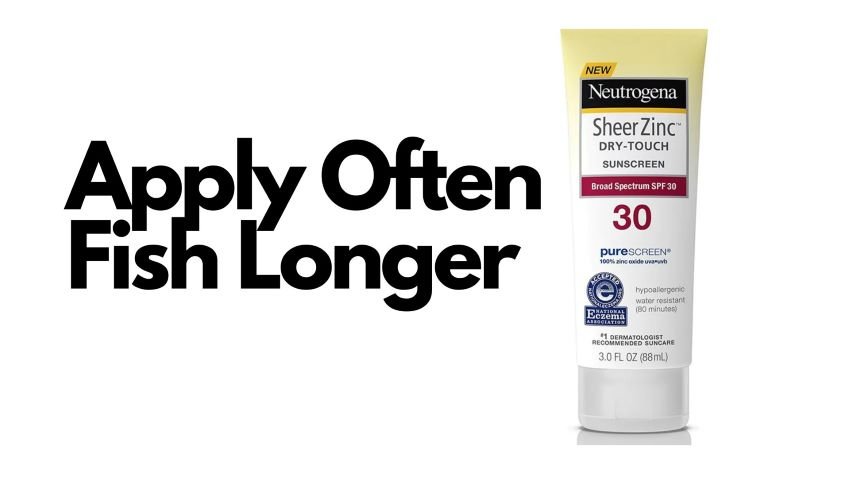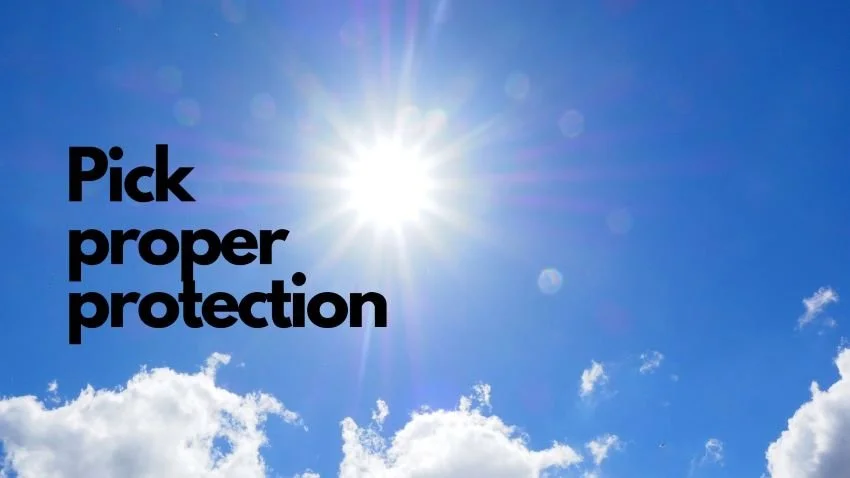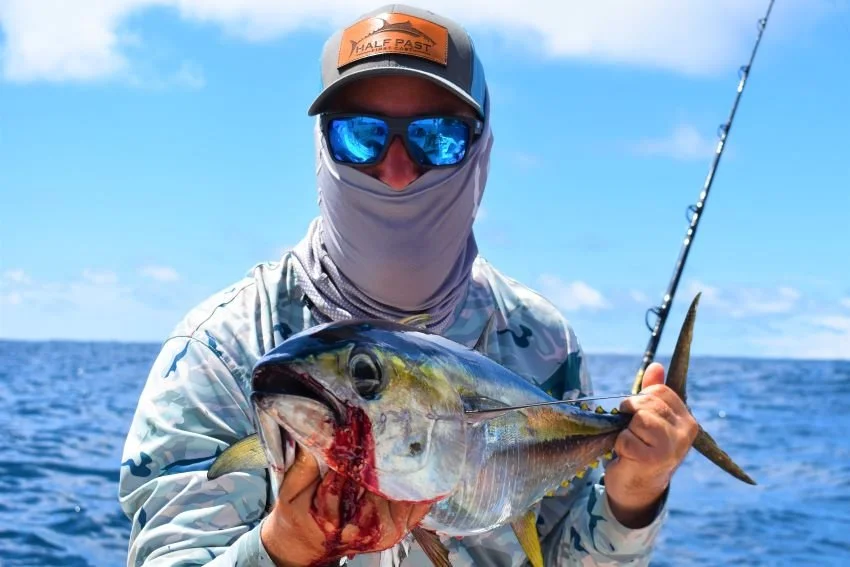The Truth on Sunscreen for Anglers
For years, we’ve all heard various rumors and theories about the best sun protection for long days on the water, with little science to back them up. Finally we decided it was time to truly get informed – failure to do so could cost us our health. Fortunately, we have the generous resources of Adam Tinklepaugh, MD and Sarah Oyler, DNP, FNP-C to answer our questions. They’re not paid endorsers of any skin care products, so we can trust them to be impartial, and we’ve previously found their advice to be practical, logical, well-reasoned and easily understood. We hope that the following Q&A helps you on your quest to protect your skin.
HPFC: When picking out a sunblock or sun protection products, do I need to get high-end brands or can I get what I need at the regular drug store?
This is a very common question we’re asked by our patients. You absolutely do not need to purchase high-end sunblock products to get excellent sun protection and a high-quality product. You can find safe, effective, and affordable sunblock products at any major pharmacy, grocery store, and at many online retailers.
HPFC: What brands do you use or prefer?
I personally use Neutrogena Sheer Zinc Dry-Touch Sunscreen Broad Spectrum SPF 30 on my face and body, but there are many other excellent sunscreen products that are preferred by our patients from brands including Blue Lizard, Coppertone, Equate, La Roche Posay, and Sun Bum.
HPFC: In sunblock, are there ingredients that must be in the product to make it useful?
The most important thing about sunblock is the active ingredient, which per American Academy of Dermatology guidelines, should be zinc oxide or titanium dioxide which are considered physical sun blocking agents. Chemical sun blocking agents include avobenzone and oxybenzone which are also effective at shielding your skin from sun rays (UV radiation), but not as well as physical sun blocking agents and are not typically recommended as highly by dermatologists.
HPFC: We’ve seen the different SPF numbers – is higher always better?
Higher is not always better, but a higher number by itself generally indicates more sun protection. SPF stands for Sun Protective Factor and it is a measure of how much energy from the sun is needed to cause a sunburn on sunblock-protected skin. SPF is calculated by dividing the amount of time needed to redden sunblock-protected skin by the time needed to redden the same area of skin without sunblock. These numbers are all determined by sunblock companies and typically don’t include factors like exercise, sweat, clothing, and variations in application technique by individual people.
Typically, dermatologists recommend using sunblock that is SPF 30 or greater, but more importantly we recommend reapplying sunblock at least every two hours or more frequently as needed.
HPFC: Is there any difference between sprays and creams?
There isn’t a difference in terms of the active ingredients, but there is a difference in the way they’re applied. Creams and lotions can be directly applied to the skin and spread around consistently to cover the desired area. Sprays may have variable coverage due to factors like distance of the nozzle from the skin and wind. If our patients use spray, we recommended spreading it with their hands after the spray application. Spray sunblock is very effective at reaching parts of our body that we can’t reach without someone else’s help. Also, we do recommend using sunscreen sprays outside because it’s not safe to inhale them.
HPFC: Are there any common allergens in some sunblocks to avoid?
The most common allergen found in sunblock is fragrance, so try to avoid any scented sunblock product. The next most common allergens are also the most common chemical sun blocking agents which include avobenzone, oxybenzone, and octocrylene. Many people use sunblock containing these allergens without any reaction, but we can develop allergies to anything at any point throughout our lives.
HPFC: Is there a particular method to use to make sure I get full coverage?
The best methods to make sure you get full coverage are to apply sunblock in front of a mirror or asking a reliable person for help. A mirror will show you whether or not you missed areas that are important to cover and a reliable person will make sure those areas are covered. Sun protection importance is subjective and varies from person to person, so make sure whoever is helping you knows that it is important to you and which areas you want to cover.
HPFC: What are some areas that are often missed?
The most commonly missed areas are the ears and the lips which are also the two highest risk areas for skin cancer. We find that people skip these areas when they apply sunblock, but these areas are almost always exposed to the sun and if a skin cancer develops in these areas they are considered high risk with a greater likelihood of spreading to other parts of the body. Other areas that are often missed are the top of the head, the backs of the hands, and shins.
HPFC: How often do I need to reapply?
We recommend reapplying sunblock at least every two hours or more frequently as needed.
HPFC: Do people of different skin types or ethnicities sometimes require different products?
Yes, because each skin type has an innate degree of sun protection based on the density of melanin found in our skin. Dermatologists use the Fitzpatrick Skin Type scale (types 1-6) to determine patients’ skin types and it is measure by the presence of melanin in skin and how it reacts to sunlight. To simplify the scale, Type I skin always burns and never tans, whereas Type VI skin never burns and always tans darkly. Based on an individual skin type, certain people require higher SPF products and greater sun protection methods.
HPFC: Should I apply sunblock every day to avoid incidental sun damage?
Sun rays (UV radiation) can reach our skin even through cloudy and overcast weather. I always tell my patients that if you can see outside, the sun can see your skin. We recommend applying sunblock every day as part of your morning routine.
HPFC: What else should anglers in particular know about sun protection products and how to best use them?
Anglers spend many hours exposed to the sun’s rays. Fortunately, the sun’s rays are weaker in the morning and evening hours, but there is still a risk associated with UV radiation exposure throughout the day. Anglers are around water which can cause sunblock to wash off and become less effective. Also, water reflects sun, so anglers should protect themselves from the sun’s rays from above and below. We recommend to anyone who spends long periods of time in the sun and around water that they should reapply sunblock at least every two hours or more frequently as needed. We also recommend sun protective clothing like broad brimmed hats, long-sleeved shirts, and gloves with SPF-containing fabric.
Don’t forget to apply sunscreen regularly, use the proper products, and see your dermatologist no less than once per year. It could save your life and keep you on the water for decades to come. Email us if you have more questions about skincare or sun protection. You can get tons of additional information on the doctor’s Aesthetic Dermatology and Mohs Surgery website.








